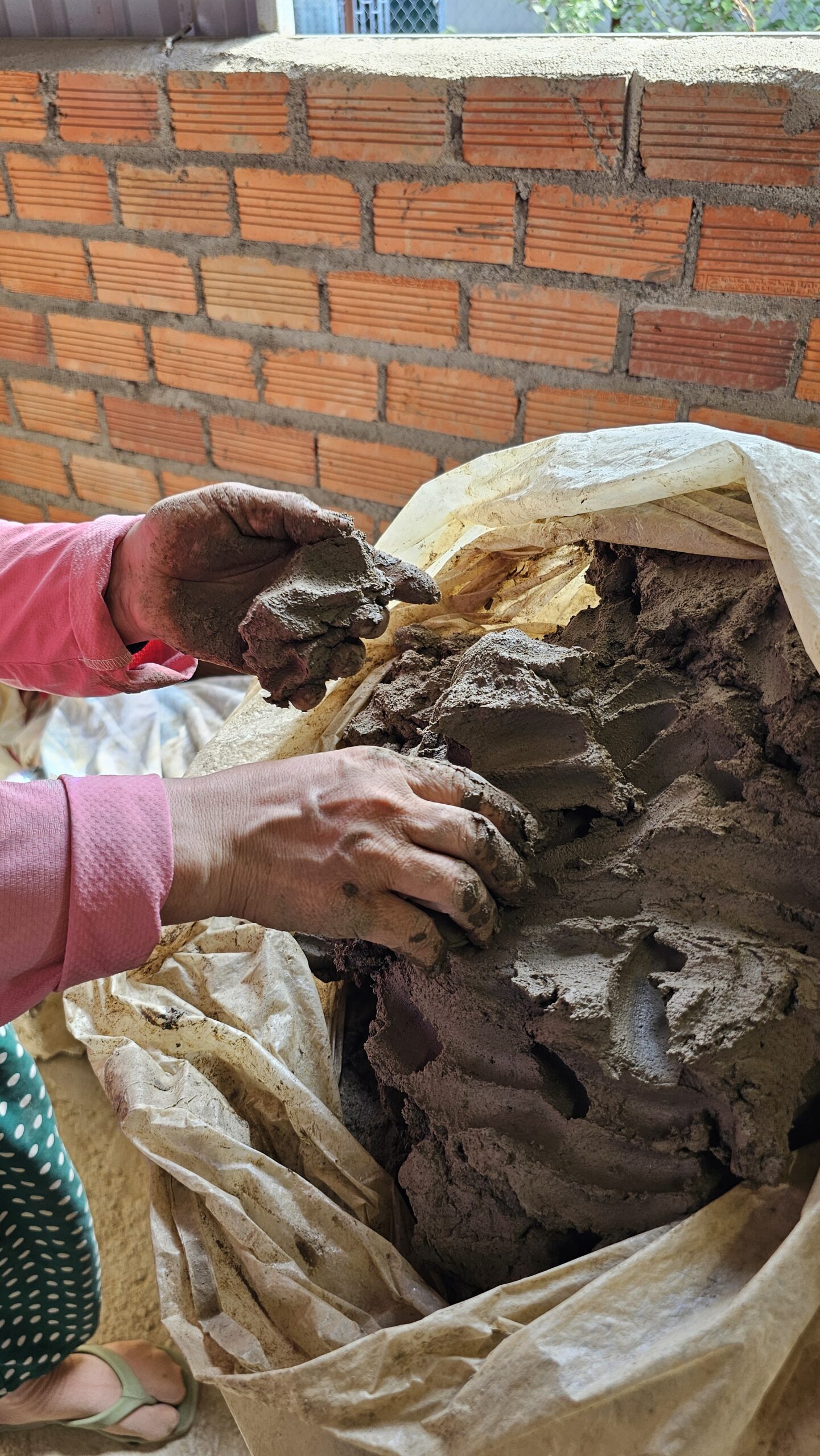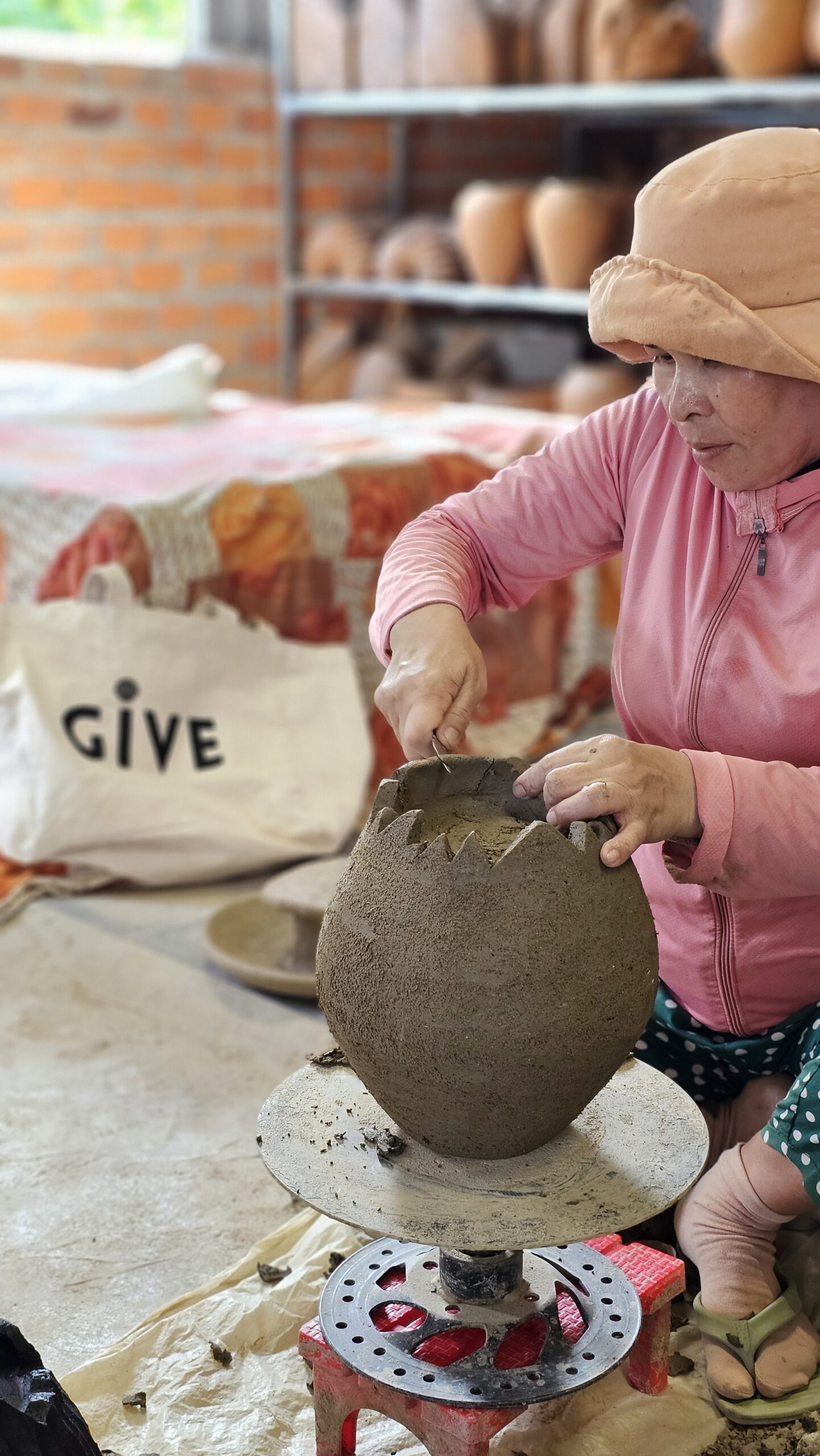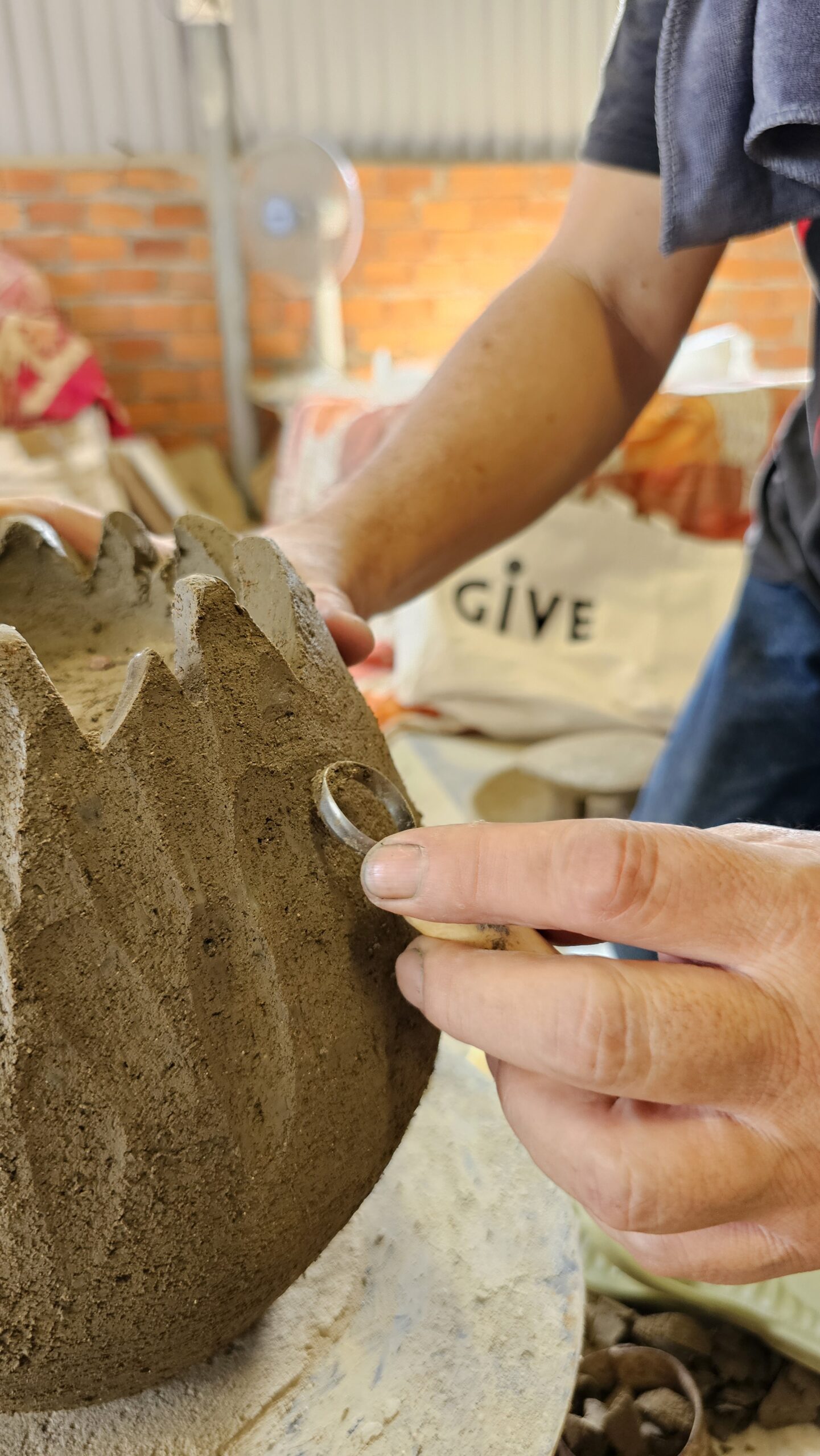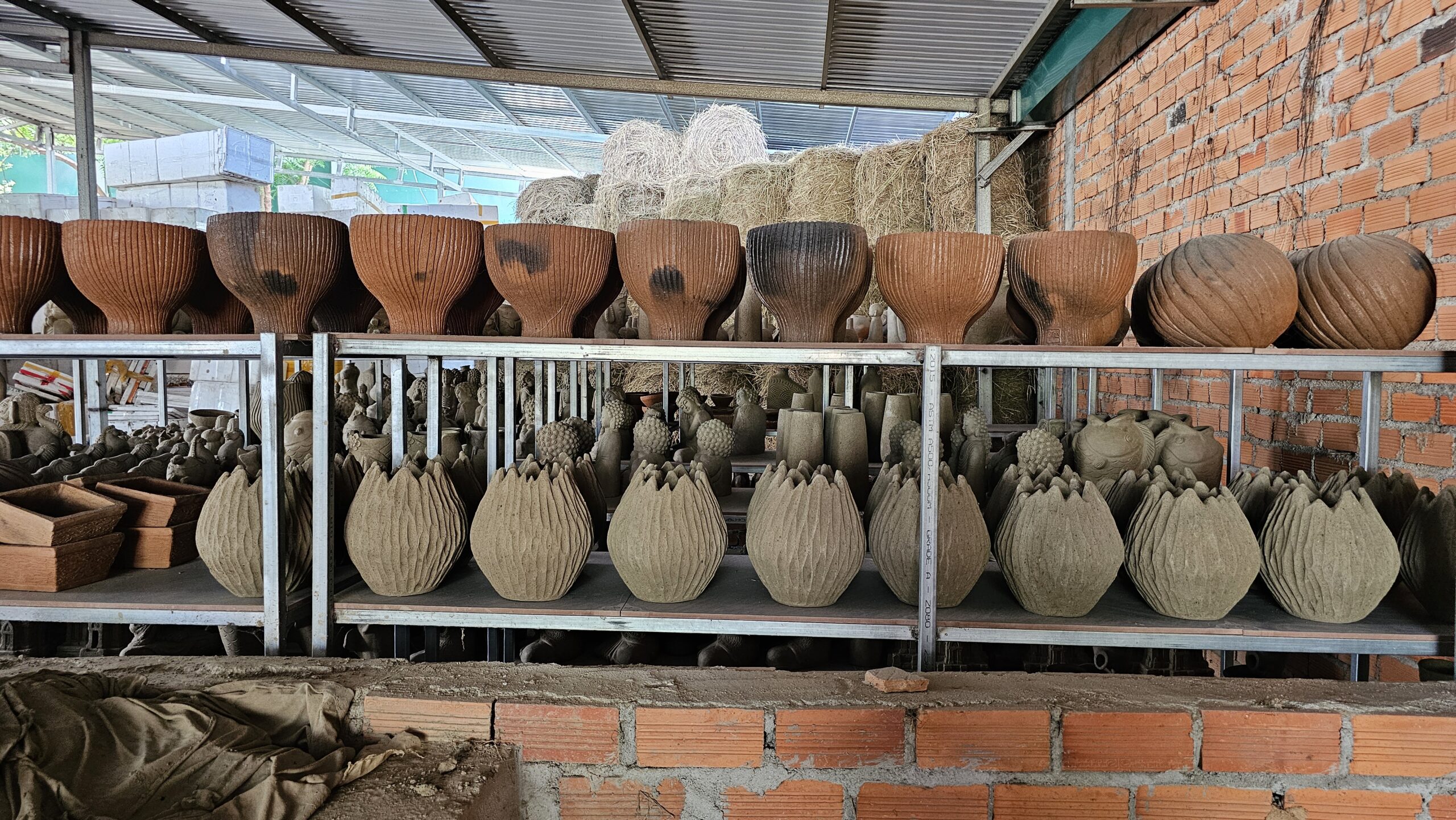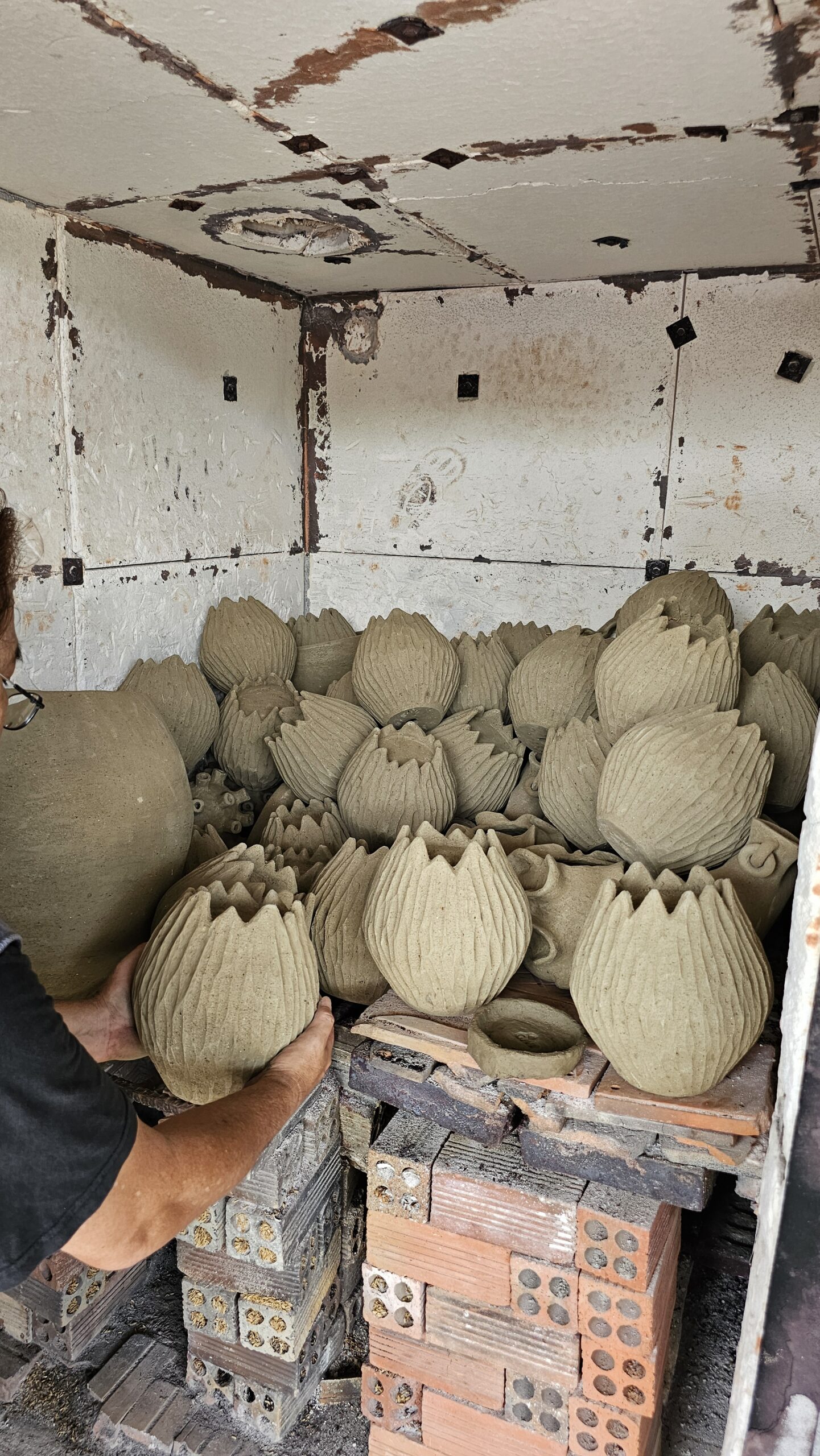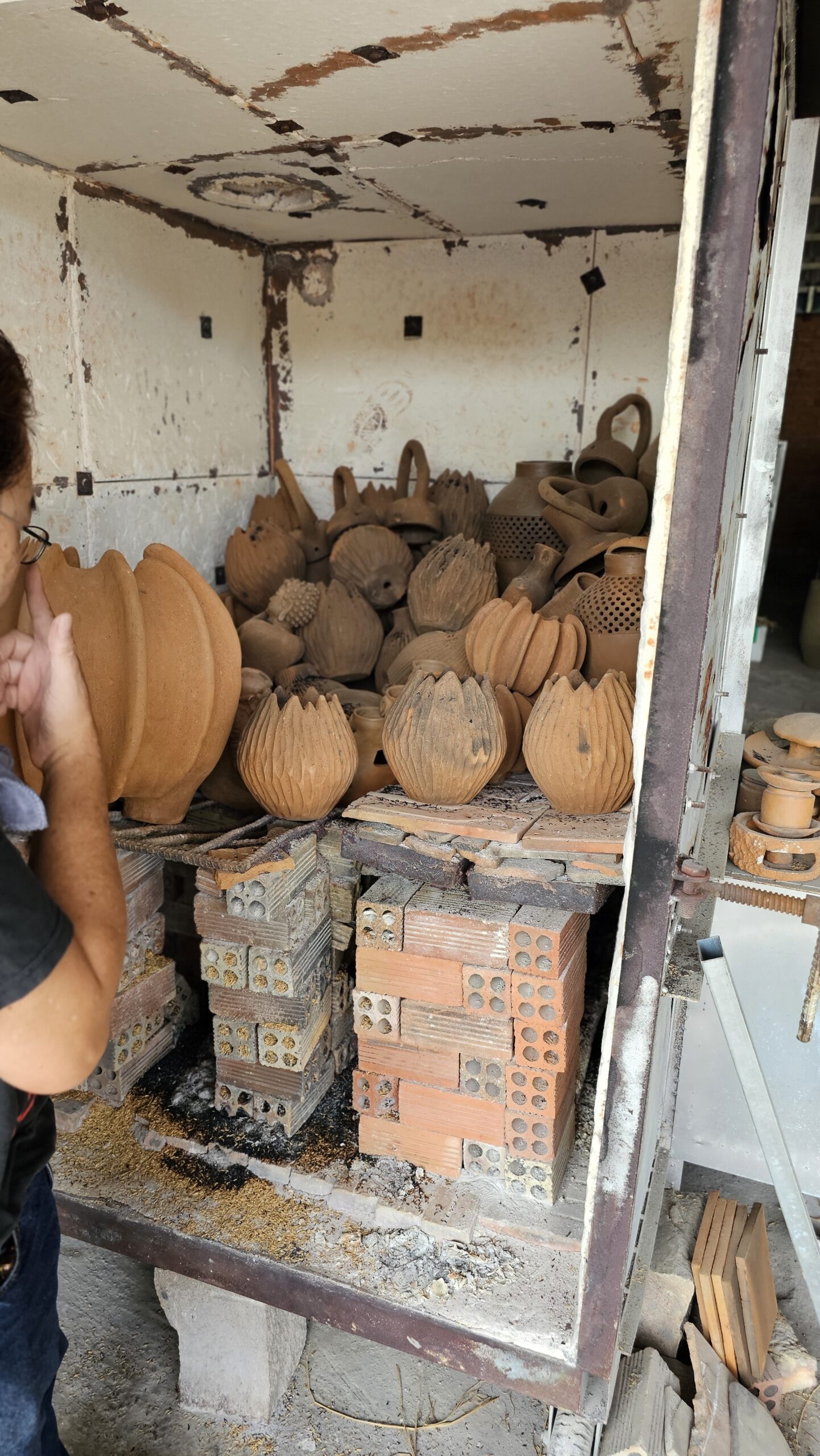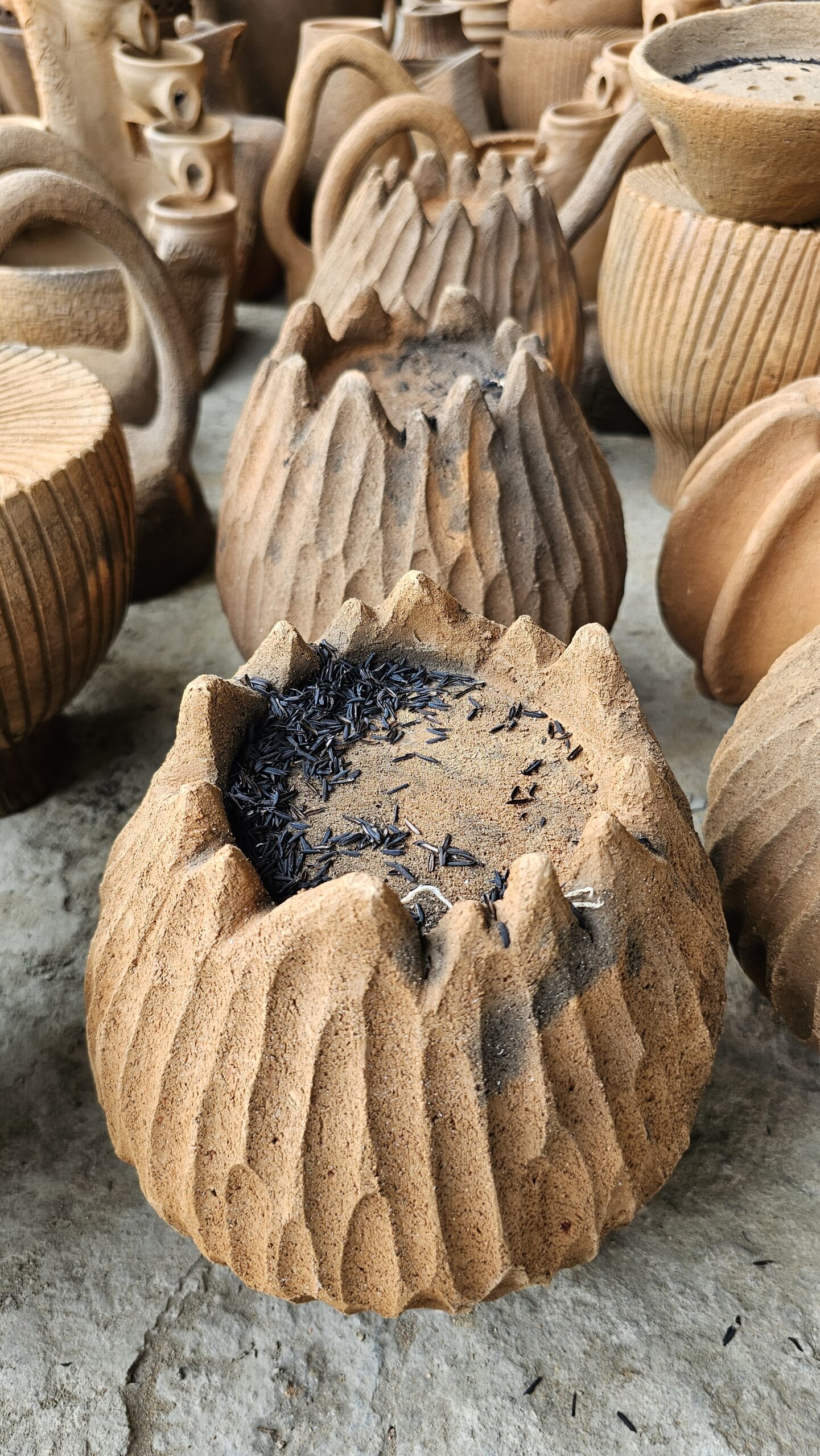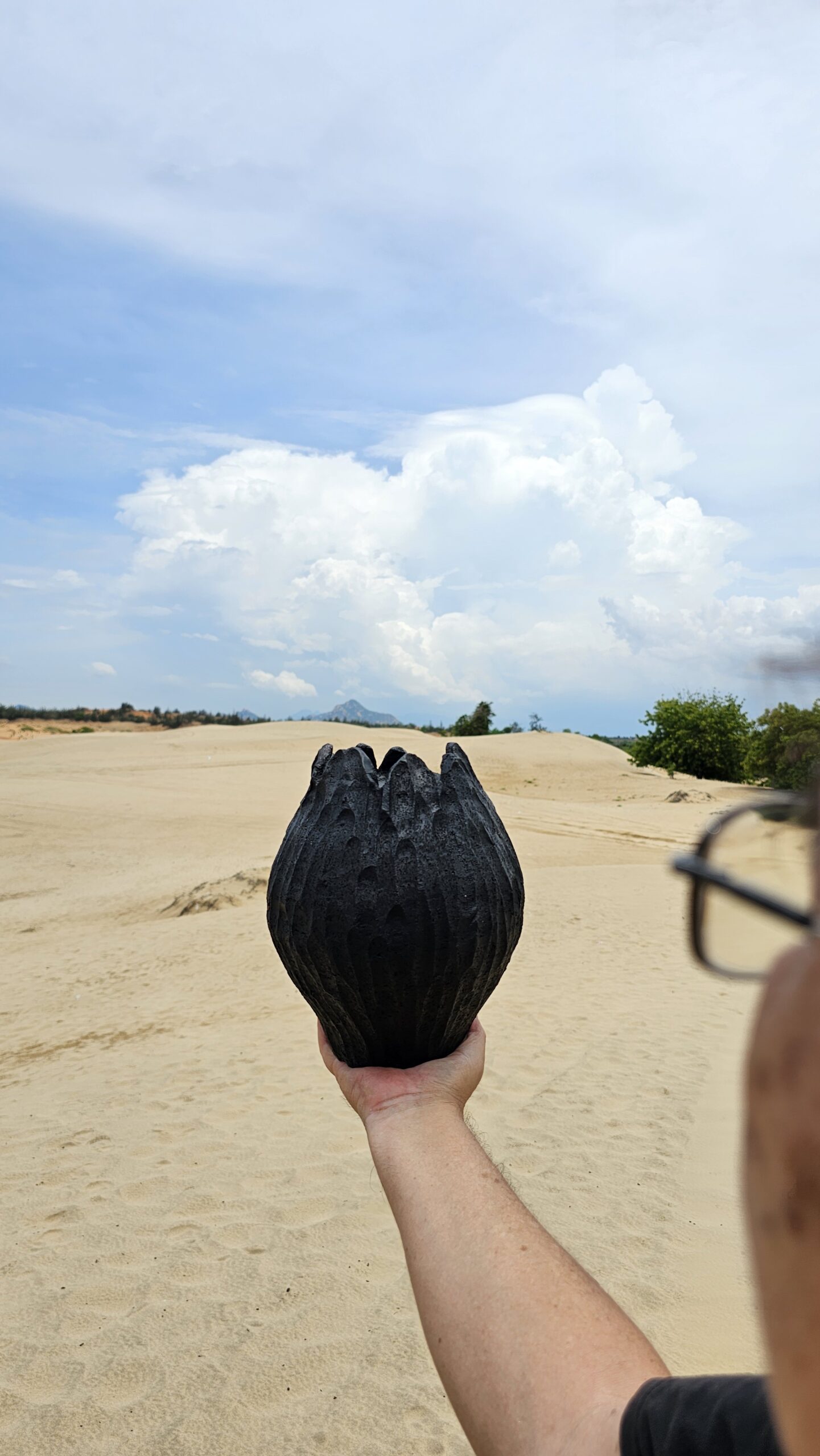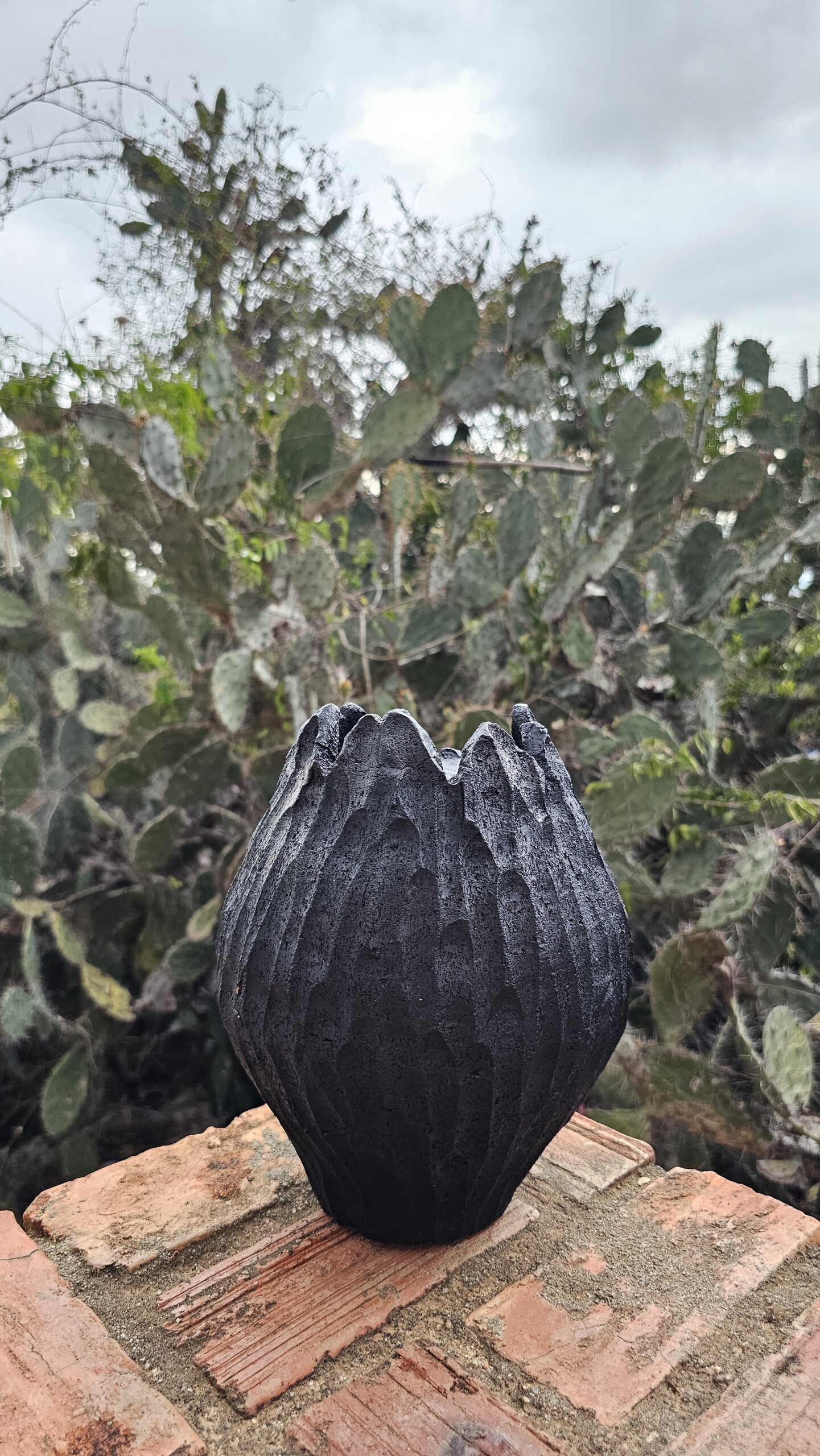Champa Pottery
Champa Pottery
Every crack tells of wind, fire, and ancient hands.
From the red dust of Ninh Thuận’s coast, the Cham women of Bàu Trúc breathe life into earth and fire, crafting terracotta pottery unlike anywhere else in the world.
Rooted in one of Vietnam’s most ancient ethnic communities, these women work with two elemental materials: Nu Lanh clay—sourced from the rice fields of Nu Lanh—and fine sand from the Phan Rang coast. The soft, fertile clay is hand-mixed with this coastal sand to create a sturdy, flexible body—resilient enough to withstand open fire, yet soft enough to mold by bare hands.
For centuries, the women of Bàu Trúc have shaped their pottery in familiar, time-honored forms—jars, urns, and vessels echoing the rhythms of Cham daily life and ritual. The process remains entirely manual: each piece shaped by walking around it, turning it slowly with palms and wooden paddles. Once dried, it is fired in open-air pits using bundles of straw and rice husks, a method that leaves behind smoky streaks, warm earth tones, and ash-marked textures—each vessel a unique signature of flame and breath.
Even after the firing ends, straw continues its quiet role—carefully wrapped around each piece to protect it from shocks and cracks during transport, preserving not just the object, but the legacy it carries.
In 2025, GIVE Sustainable artists came to Bàu Trúc with a question: What if tradition made space for transformation?In dialogue with the artisans, GIVE proposed a new design—a lotus-shaped form, inspired by Vietnam’s national flower and its symbolism of beauty rising from mud. Together, they developed a bespoke terracotta collection for a five-star hotel in Saigon. It was the first time these Cham women shaped something beyond their traditional forms—a creative leap rooted in trust and collaboration.
These are not mere clay forms.
They are fire-marked testaments to heritage
and proof that tradition, when nurtured, can bloom.
Fired by Earth. Shaped by stories. Held in time.



